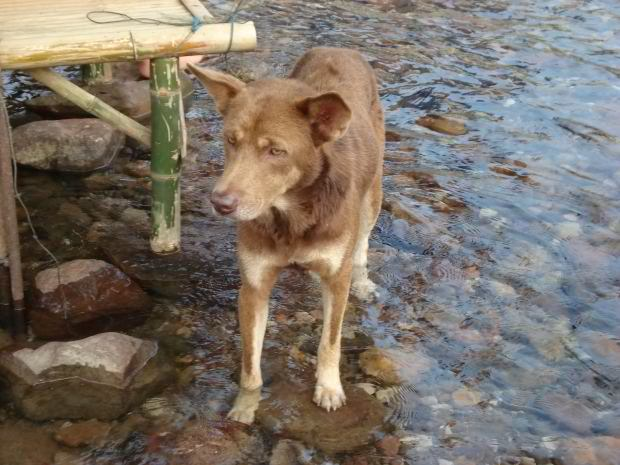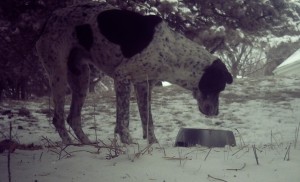Your lost dog has been missing now for several weeks (or months) and your sightings and leads have fizzled out. Don’t despair. It is never too late to jump-start the search for a long-lost dog.
This article is designed to give you some ideas for reigniting your search to give you a place to pick up again. Hopefully, you have read our other articles on shy lost dog search strategies and friendly lost dog search strategies. If not, please check the categories at the right that link to many more articles. We also hope you have mapped all the sightings on a map, either a web-based map like Google Maps or a large-scale paper map.
Now, imagine you are a detective working on a cold case. You may talk to 99 people who have not seen or heard anything. You are looking for the ONE person who has. Someone, somewhere has seen or knows something. Be persistent and don’t give up. Even if they haven’t seen your dog, they may see your dog tomorrow. Putting a flyer in their hands ensures they will know who to call when they see him.
Look at your map and draw a circle in a one mile radius around the last confirmed sighting. Go back to the last confirmed place that your dog was seen and flyer heavily in a one mile radius. Don’t let false assumptions or geographic barriers deter you. Don’t assume that your dog would NEVER have crossed the highway or the river or the lake. False assumptions will make you miss possible sightings and leads.
Make sure you have listed your dog with our partner, Pet FBI at www.petfbit.org so that his or information is maintained in a centralized, national database. Talk to everybody! Put a flyer in their hands and ask them if they have seen your dog or if they think a dog may have been hanging around their house or farm. Did they see dog tracks under their bird feeder? Was their dog poop in their yard when it shouldn’t be there? Was their outdoor cat food disappearing faster than normal?
Visit EVERY place that serves food in the one mile radius. Don’t forget convenience stores and gas stations! Talk with the kitchen staff and management. Did anybody see a dog hanging out near the dumpsters? Did anybody notice dog tracks near the dumpsters in the winter? Did any restaurant patrons mention a dog hanging out in the parking lot? Did anybody see a similar looking dog being walked in their neighborhood?
Think about the demographics of the neighborhoods in the one mile radius. Maybe you need to print some flyers in Spanish or another language? Or, maybe there are some older residents who don’t get out much to see signs and flyers but may have taken pity on your dog and fed him over the winter? Think about the people that may not have seen or understood your first round of flyering.
Now is a great time to refresh your posters and intersection signs. You may want to change the heading to STILL MISSING – so that people know that the search is still on. Think outside the box. Ask every business in the one mile radius if you can hang a flyer in their window and employee break room. Maybe your dog approached workers on their lunch break. Or maybe they saw him when they were driving to or from work.
If you don’t get any new leads in the one mile radius; you will need to expand your area. You may want to consider using USPS Every Door Direct Mail. Beware of some of the other lost pet mailing services that you will see advertised. Some of them are scams and do not reach the number of homes that they promise.
Refresh the memories of the animal control facilities, shelters, police departments, vet clinics and municipal offices in your county and surrounding counties. Send them fresh flyers.
Give a new flyer to postal workers, delivery drivers, school bus drivers and garbage truck drivers. Don’t forget pizza and sandwich delivery drivers also! They are out and about in the evening, when your dog may be moving around, looking for food.
Check with your local Department of Transportation. Have they found any deceased dogs alongside the road? Or has a dog been spotted eating on a deer or other wildlife carcass?
Check with your local railroad companies to see if they have any reports of deceased dogs along the railroad tracks. Lost dogs often use railroad tracks as a path of travel between their hiding places and food sources. Deceased wildlife hit by trains also make a good food source for hungry lost dogs.
Repost your dog on Craigslist, Next-door and your local online classifieds. Consider taking out a print newspaper ad also. There are still many people without computers or the internet!
Remember, Never Give Up! Re-energize and jump start the search for your missing dog. Your dog is depending on you to bring him home.
Our tips, ideas and articles are based on information gathered from thousands of successful lost dog recoveries. Any advice or suggestions made by Lost Dogs of Wisconsin/Lost Dogs Illinois is not paid-for professional advice and should be taken at owner’s discretion.
1/22/2021





